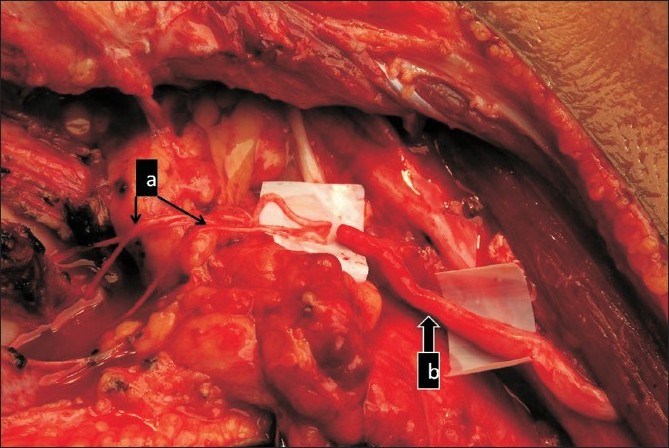Intraoperative Nerve Action Potentials (NAP) Optimization
Intraoperative nerve action potentials allow testing of the peripheral nerve through physiological means. A surgeon uses the information you give them from the NAP to assess nerve damage, assess the degree of nerve sparing (or intact myelinated fibers) and evaluate the nerve for potential recovery in more severe lesions. While it’s not the end-all-be-all, it is a very useful tool that the surgeon will use to ultimately decide the course of action for that patient. Your feedback is critical to the decision the surgeon will make… neurolysis or nerve repair.
What’s a little bit different here is that we aren’t testing things out before they start their incision like a SSEP, MEP or BAER. We won’t be able to start testing till they have their exposure complete, and the surgeon is staring straight down at the nerve. It’s go time for the surgeon. You won’t have time to troubleshoot a sloppy setup.
Also, we aren’t looking for a loss of an established baseline. The surgeon already knows that there is damage to the nerve. What we’re looking to find out if there is an intact nerve capable of regeneration or not.
How important is a proper assessment of intraoperative nerve action potentials?
Here’s what some of the leaders in peripheral nerve surgery and monitoring found at their center…
So you can see, we can contribute quite a bit here. And not having the right setup might cause you to miss the very tiny intraoperative nerve action potential (a false negative).
Here’re 7 ways to make sure your neuromonitoring CNAP is spot on accurate.
- Supramaximal stimulation – This is not like stimulating pedicle screws, where you want to record the threshold. Here, you want to make sure that you elicit a response from all the functioning fibers. This will give you the largest amplitude possible. Stimulation levels are about 3-15 V (or 1-5 mA) at a duration of 50 microseconds for a healthy nerve, and up to 100 V for a scarred up, unhealthy nerve. Rarely go over 50 V.
- Get some J hook (shepherd’s crook) electrodes – The nerves are going to be in blood and up against other tissue. Use the hooks to lift them out into the air and reduce current shunting. Now the nerve is getting all the juice, instead of sharing.
- Use a 3-pronged stimulator spaced our appropriately– by having the cathode surrounded by 2 anodes, you will reduce the shock artifact that can corrupt your signal. This distance between the 3 stimulating electrodes should be 3mm for smaller nerves, and 5-7mm for larger nerves (like the sciatic).
- Space out your recording electrodes – a distance of 3-5mm works well to reduce artifact
- Maintain space between the stimulating electrodes and recording electrodes – Your stimulating and recording electrodes should be greater than 4cm apart. Again, this will help eliminate shock artifact
- No cold irrigation – cold irrigation can mimic a conduction block. This defeats the purpose of the test.
- Filter out the unwanted frequencies – put your high-frequency filter to 2,500 Hz and your low-frequency filter to 10 Hz. And don’t get too aggressive here. If you filter out too much, you can obliterate the CNAP.
- *BONUS* Make sure your gain and sweep are set up to see it on your screen – a sweep speed of 0.5-2 ms per division will usually put the nerve action potential in the middle or the left side of your screen, with enough space to appreciate the waveform. Set your gain somewhere between 50-500 microvolts per division to see the amplitude (though you might need to go higher than that). The amplitude size of the nerve action potential can vary greatly, so adjust accordingly.
And there you have it. 7 + 1 tips to getting reliable intraoperative nerve action potentials. I hope it helps reduce your chances of getting a flat triggered response due to a technical error, possibly leading the surgeon down the wrong path.
Keep Learning
Here are some related guides and posts that you might enjoy next.
How To Have Deep Dive Neuromonitoring Conversations That Pays Off…
How To Have A Neuromonitoring Discussion One of the reasons for starting this website was to make sure I was part of the neuromonitoring conversation. It was a decision I made early in my career... and I'm glad I did. Hearing the different perspectives and experiences...
Intraoperative EMG: Referential or Bipolar?
Recording Electrodes For EMG in the Operating Room: Referential or Bipolar? If your IONM manager walked into the OR in the middle of your case, took a look at your intraoperative EMG traces and started questioning your setup, could you defend yourself? I try to do...
BAER During MVD Surgery: A New Protocol?
BAER (Brainstem Auditory Evoked Potentials) During Microvascular Decompression Surgery You might remember when I was complaining about using ABR in the operating room and how to adjust the click polarity to help obtain a more reliable BAER. But my first gripe, having...
Bye-Bye Neuromonitoring Forum
Goodbye To The Neuromonitoring Forum One area of the website that I thought had the most potential to be an asset for the IONM community was the neuromonitoring forum. But it has been several months now and it is still a complete ghost town. I'm honestly not too...
EMG Nerve Monitoring During Minimally Invasive Fusion of the Sacroiliac Joint
Minimally Invasive Fusion of the Sacroiliac Joint Using EMG Nerve Monitoring EMG nerve monitoring in lumbar surgery makes up a large percentage of cases monitored every year. Using EMG nerve monitoring during SI joint fusions seems to be less utilized, even though the...
Physical Exam Scope Of Practice For The Surgical Neurophysiologist
SNP's Performing A Physical Exam: Who Should Do It And Who Shouldn't... Before any case is monitored, all pertinent patient history, signs, symptoms, physical exam findings and diagnostics should be gathered, documented and relayed to any oversight physician that may...








Joe- do you have a place to buy tri-polar stim electrodes for NAPs or a manufacturer who sells different size stim/recording electrodes for intraop NAPs?
Thanks! – nice post
http://www.inomed.com/produkte/iom/stimulationssonden-und-kabel/
http://www.medical-langer.de/en/products/accessories/ionm/stimulation-probes/